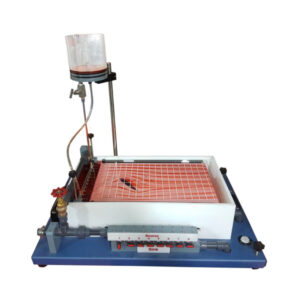This unit is designed for study of the palterns of air flow, as well as the characteristics of the objects moving in the air and analyze data by using its data acquisition system. By using students can learn the methods of identifying the basics aerodynamic characteristics of the under study models and set the relation between them.
A wind tunnel is the classic experiment system for aerodynamic flow experiments. The model being studied remains at rest while the flow medium is set in motion, and thus the desired flow around the model is generated.
The Experimental Subsonic Wind Tunnel is an “Eiffel” type open wind tunnel used to demonstrate and measure the aerodynamic properties of various models. For this purpose, air is drawn in from the environment and accelerated. The air flows around a model, such as an aerofoil, in a measuring section. The air is then decelerated in a diffuser and pumped back into the atmosphere by a fan. The carefully designed nozzle contour and a flow straightener ensure a uniform velocity distribution with minimum or little turbulence in the closed measuring section. The flow cross section of the measuring section is square. The built-in axial fan with guide vane and a variable-speed drive is characterised by an energy-efficient operation at high efficiency. Air velocities of up to 30m/s can be reached in this open wind tunnel. The trainer is equipped with an electronic two-component force sensor. Lift and drag are detected and displayed digitally. The air velocity in the measuring section is displayed on the inclined tube manometer and digital display meter in Pascals. The 16-Tube Manometer is used for measuring the pressure curves in drag bodies. By using the DAQ System for Data Acquisition (optional), the measured values for pressure, angle, velocity and forces can be transferred to a PC where they can be analysed with the software.
Extensive accessories allow a variety of experiments, for example lift measurements, pressure distributions, boundary layer analysis or visualization of streamlines. The well-structured instructional material sets out the fundamentals and provides a step-by-step guide through the experiments.




